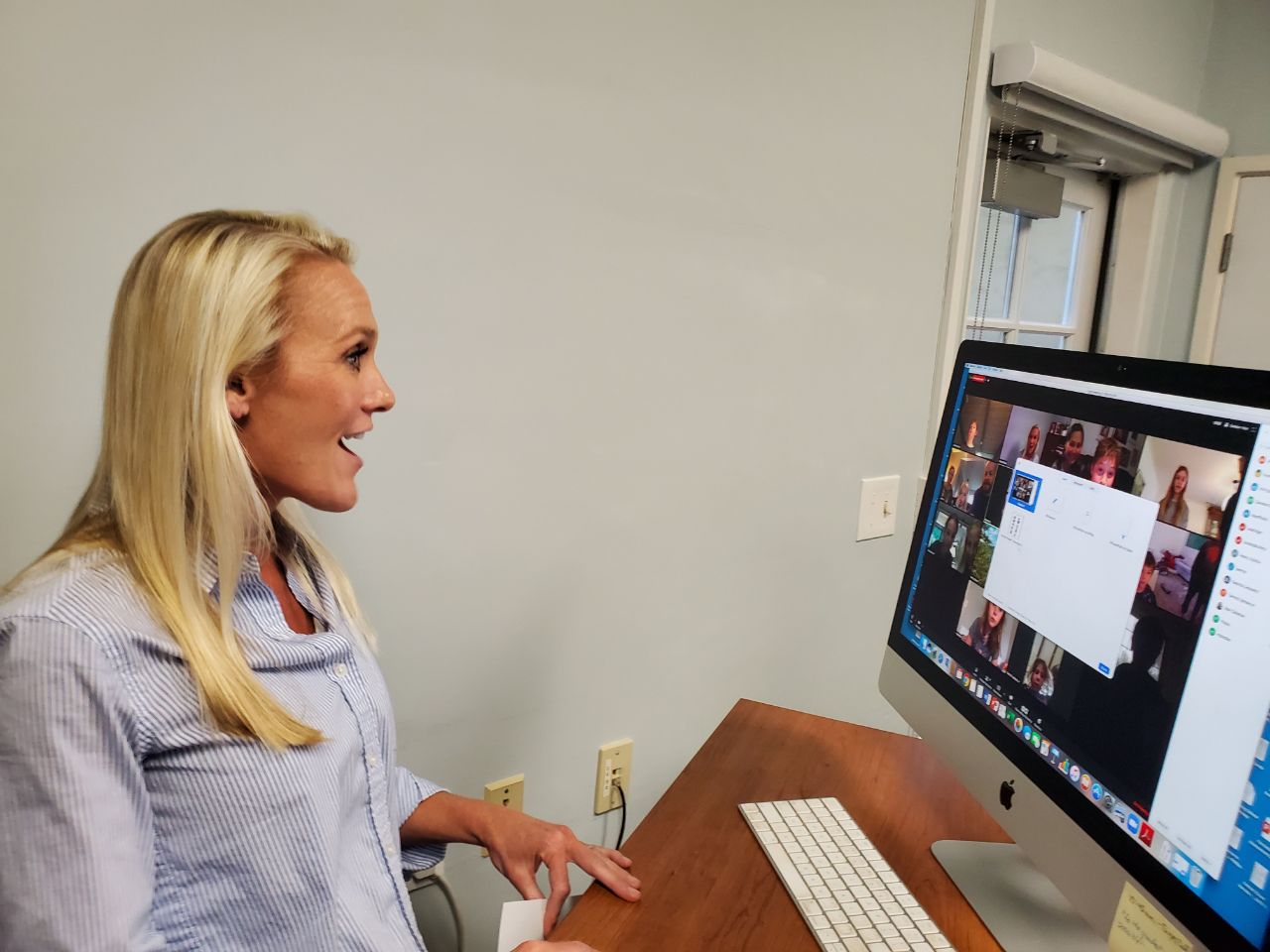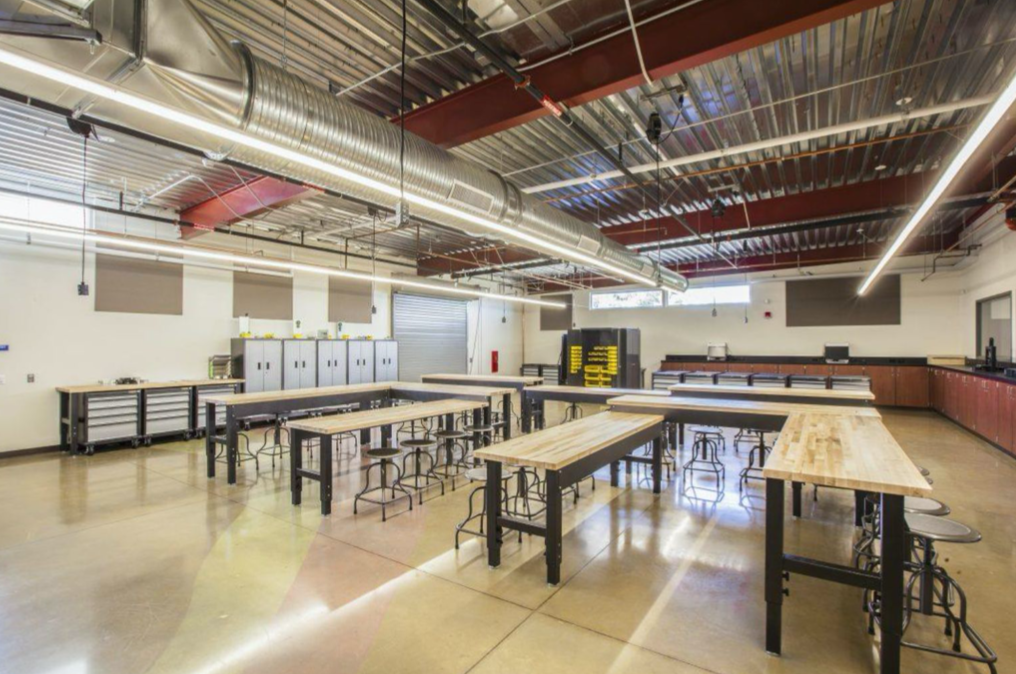Cold Spring School Latest

Next week at a special board meeting, the Cold Spring School Board will consider approving the acquisition of a short-term loan in order to fund the school’s upcoming expansion project. Cold Spring School Superintendent Dr. Amy Alzina hosted members of the community for an informational meeting about the project and funding options two weeks ago at Montecito Inn on Coast Village Road. About 40 district residents attended in order to learn more about the school’s plans.
An expansion project at the school has long been a goal of the School Board, well before Dr. Alzina’s tenure commenced in 2017. The board has long been focused on replacing the portable buildings on campus, which are nearly 30 years old and well past their useful life. Recent growth in the enrollment on campus has highlighted the issue of the dilapidated portables even more, as the two remaining portable classrooms, which, in pre-COVID days, housed the afterschool program and special education, are rusted and deteriorating rapidly. The portables currently house the second grade as well as art classes.
It was six years ago, under the leadership of then-superintendent Dr. Tricia Price, that the board voted to move forward with a new building to house classrooms and administrative offices; at one point, plans were in place for a 6,000-square-foot building to house three classrooms as well as the front office staff, and offices for school specialists. The Spanish-style building was to be the new gateway to the school, giving a place for visitors to check in before coming onto campus, which would serve to assuage a long-held security concern regarding the campus layout.
When the school was first built in 1889, the entrance to campus was along Sycamore Canyon Road, before it became a busy state highway. For safety purposes, a wall was erected at some point in the ‘70s or ‘80s, to protect the campus from the traffic; the entrance to the school was then moved east to the parking lot on Cold Spring Road. The office and administration building remained in the center of campus, causing visitors to have to enter the campus before checking in with campus officials, which has concerned many parents and teachers over the years. The proposed plan in 2016 also included improvements to existing infrastructure on the 100-year-old existing buildings include repairing or replacing roofs and restrooms, as well as repairing or replacing aging water/sewer lines, fire alarms, and schoolwide communication systems, and improving ADA accessibility, among several other maintenance items.
To fund the project, the board voted to seek a bond measure in November 2020: Measure L2020, which was for $7.8M, failed by a small margin. Following the failure, the board formed a Facilities Task Force, which includes 12 district residents including school parents, faculty, staff, and community members.
Last June, the Task Force issued a formal recommendation to construct a pared down, permanent building in two phases, beginning with two classrooms in Phase 1 followed by a third classroom and administration/office area in Phase 2. The new classrooms will be built next to the two portable classrooms near the entrance to the school; the new building will not replace the portables, yet. The first phase will cost about $1.6M, $1M of which will be pulled from facility reserves. According to Dr. Alzina, the Phase 1 classrooms will be utilized by STEAM and art classes, so the traditional, expensive build-out for a full-time classroom will not be necessary. The rooms will feel industrial, similar to a garage or workshop. Phase 2 of the project will cost an additional $2M, and will include one additional classroom, plus administrative offices, becoming the entrance to campus as desired in the school’s master plan. This will allow the library to expand into the current office space. The second phase of the project will be built where the portable classrooms are currently; it’s likely the second phase will require a bond.
Cold Spring School District residents have voted down two other ballot measures in recent years: In addition to Measure L2020 ($7.8M), Measure K in November 2006 ($14M) and Measure R in February 2008 ($8.75M) both failed. The last bond measure to pass was Measure C ($2.4M) in 2008, the funds of which went to renovate the seven older classrooms and two student restrooms in the main school building, as well as improvements to the play areas with a new play structure, blacktop, and new landscaping on the corner of Cold Spring Road and Sycamore Canyon Road. The remaining funds are earmarked to improve the utility infrastructure throughout the campus.

Dr. Alzina reports that enrollment has increased since the beginning of the pandemic, with nearly 200 students currently enrolled. Because of the increase, special programs, including music, are housed in the school auditorium, and some special education programs are housed in the school library. “Space is as tight as ever. We need more classrooms. This problem is not going to go away,” she told us earlier this week, adding that the enrollment at the school is growing from the ground up, with many families moving to Montecito with kindergarteners who will be at the school through 6th grade.
A state mandate that has required expansion of the Transitional Kindergarten (TK) program, which will eventually include all four-year-olds, regardless of when their birthdays are, has put added pressure on space limitations. As of press time, there are 31 students enrolled in the TK and Kindergarten programs, with just two classrooms in which to accommodate them. “And it’s only February!” Dr. Alzina said. The State requires that TK has a one to 12 student/teacher ratio. Current class sizes for the rest of the school range from one to 14 to one to 24. Some members of the nearby community have questioned the need for such small class sizes. “Studies show that reduced class sizes increase student achievement. We aren’t going backward and increasing class sizes,” she firmly said.
The Santa Barbara County Education Office has reviewed the District’s debt package, and has given the green light that the District has the ability to repay the Certificate of Participation loan, a debt instrument frequently utilized in the education sector. The loan of $600K will be repaid by the District’s General Fund over a 10-year period, potentially sooner. With an interest rate of 1.9%, Dr. Alzina says it’s the most cost-effective way to “put shovel to ground” now, rather than waiting. “Construction costs are going up. If we wait, the cost for this project could easily increase to $1.8M,” she said, adding that the loan product is similar to the one being used by Montecito Union School as they undertake capital improvements. A recent fundraising campaign has garnered about $150K in donations. “Any additional monies raised will go towards paying off the loan,” Dr. Alzina said. If the loan is not approved by the Board, alternative funding solutions include drastically depleting the school’s reserves, or waiting while funds are raised through donation.
Despite Dr. Alzina’s leadership and transparency being the topic of many posts on social media, Cold Spring School District is the highest performing district in the state, with 97% of students meeting or exceeding standards in English Language Arts and 95% meeting or exceeding standards in Math, even during the pandemic. The District’s financial rating from S&P Global is AAA, due to its financial management policies, including the board’s reserve policy adopted three years ago, budgeting and fiscal management, and conservative three-year budgeting practices.
Construction on Phase 1 of the new building is expected to take place later this year; plans are currently being reviewed by the Department of School Architects. For more information on the project and the capital campaign, visit www.coldspringfoundation.com/buildingbrightfutures.







